Request Appointment
Enter your details and we will be in touch with you shortly;
Or call
8655885566
between 8 am and 8 pm.


The severity of back discomfort, as well as the ways to manage it could be pretty obvious such as a fall injury unless proved otherwise.
According to a recent study, approximately 60% of people in India suffer from back pain, are you one of them?
If yes, then combat aches and pain in the spine with three steps:
Let us now look at a few reasons why a person would be facing an upper & lower back issue:
Sitting on a desk for prolonged hours in an incorrect position can put lots of unnecessary pressure on the spine, neck, discs, and ligaments.
Someone who performs the same activity all day or raises something over their head all day may develop muscular discomfort, tightness, or strain. If people disregard these warning signs over time they may experience chronic discomfort in the long run.
Lifting something incorrectly, car accidents or slipping or falling are some of the traumatic injuries. In other cases, the injury is visible, and pain occurs shortly after the occurrence.
Pain may not appear until later in the day or the next day in certain cases. Traumatic injuries can be life-changing, and complications might arise as a result of them.
Other reasons for upper back pain include Spinal infection, Pinched Nerve and Osteoarthritis. It is advisable to consult a spine specialist or a primary healthcare provider if the pain persists for a long period of time.
A lumbar disc’s jelly-like core might pierce the thick outer covering and irritate a neighbouring nerve root. When proteins from the herniated part of the disc reach a nerve root, they induce inflammation, which, together with nerve compression, causes nerve root discomfort. Nerve fibres abound in the disc wall, and a rupture in the wall can cause excruciating pain.
The sacrum at the bottom of the spine is connected to either side of the pelvis via the sacroiliac joint. It’s a sturdy, low-movement joint that mostly absorbs stress and strain between the upper and lower bodies. If the sacroiliac joint gets inflamed or if there is too much or too little mobility in the joint, it can become uncomfortable.
A fracture of the cylindrical vertebra, in which the bone basically caves in on itself, might result in immediate discomfort. This form of fracture is more prevalent in older persons and is caused by weak bones, such as osteoporosis.
Our bodies aren’t built to sit for extended periods of time. Sitting has been connected to a variety of health issues, as well as doing havoc on your lower back.
While many individuals are forced to sit due to their desk employment or online classes, there are actions you can do to reduce the damage to your lower back and find the optimum posture to sit with a herniated disc, such as:
When your back hurts, what should you avoid doing? Carry a large backpack, briefcase or anything that puts pressure on your back. It will exacerbate your lower back discomfort.
One must consciously avoid slouching on the couch as it creates unwanted tension to the lower back, neck and joint pain. Maintaining posture is the key to improve blood circulation and avoid fatigue.
Productivity is frequently improved by using ergonomic products. The workstation becomes more productive when it is designed to allow for optimal posture, less exertion, fewer motions, and better heights and reaches. It is advisable to use ergonomic chairs and pillows to avoid strain to the joints, upper & lower back.
There are several ways to ease back pain. Some are manageable at home by practising a few muscle strengthening exercises and having a balanced diet. Let us quickly go through them one by one.
Many tasks, including tying a shoelace or getting something from the top shelf are made simpler with strong core muscles. Athletes, such as runners, need strong core muscles since weak core muscles can contribute to fatigue, decreased endurance, and injury.
You can add a few core muscle strengthening exercises to your daily regime.
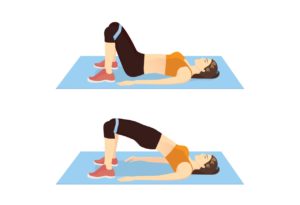
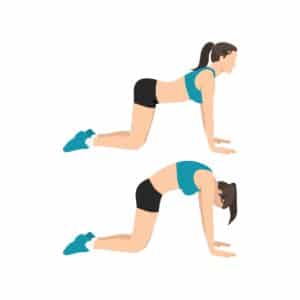
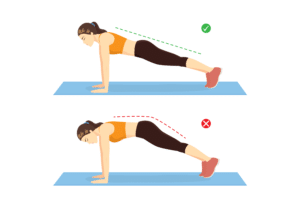
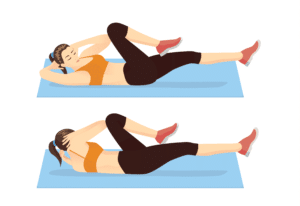
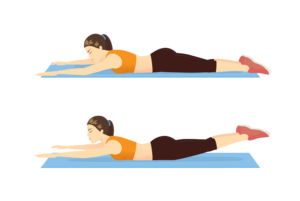
It is important to practise good posture as most of our back issues are connected with overburden on our back. This issue could be easily tackled by changing your posture every 30 minutes.
If your sitting, it is important to make use of ergonomic chair back support. It helps in combating lower back pain. If you are in lying down, place a pillow below under the knees, and your head. Your neck and should needs to be aligned properly. You can get an ergonomic pillow as suggested by the spine expert.
If you are standing, remember to give equal weight to both legs. One must stand upright, head straight, pull your shoulder slightly behind.
Every individual irrespective of their age and gender have been struggling with both internal and external challenges. Uncertain times have added to our existing personal and professional life problems. Stress can build more pressure in our back pain.
It is important to calm our racing minds. Experts recommend practising breathing exercises and meditation regularly to tap stress levels.
Where Work from Home and Online classes have taken away the majority of our day, we tend to munch on junk food. It is crucial to burn these extra calories by doing some physical activities. Including green leafy vegetables and fruits rich in proteins and calcium will aid in strengthening the muscles
The human body requires 8 hours of sound sleep to remain active and enthusiastic. During the pandemic, we have seen a significant shift in the sleeping cycles of working professionals, students or even people who otherwise stay at home. Soft mattresses can throw your back out of alignment, so for back pain treatment, pick a mattress and an ergonomic pillow that’s in the medium to the firm range.
There could be several factors that aggravate back pain. We must consciously and willingly make efforts to maintain our body structure, take proper sleep, diet and exercises, must be prepared with a first aid kit, avoid physical activities that add pressure to our muscles and joints.
It is recommended to use comfortable chairs for back pain & lower back pain If the pain persists for a long period of time, it is advisable to consult an spine specialist.
To get an expert advice, from a spine specialist with expertise in upper back and lower back pain , then you must consult at QI Spine Clinic – India’s leading super-specialty back & neck clinic for diagnosis & treatment of spine problems. Kindly visit www.qispine.com and request an appointment from the website.
Visit our nearest clinic for your first consultation